Introduction To Vanilla: Origins And History
Vanilla has been a sought-after spice for centuries, and its history is rich and fascinating. The word “vanilla” comes from the Spanish word vainilla, which means “little pod”. The Totonac people of modern-day Mexico were the first known cultivators of vanilla. They believed that the orchid plant was a gift from their goddess of agriculture, Xanath. They used vanilla as a flavoring for their chocolate drinks and as a medicinal herb.
It wasn’t until much later that Europeans were introduced to vanilla. The Spanish conquistador Hernán Cortés tasted a chocolate drink made with vanilla in 1520 and brought the spice to Europe. It quickly became popular among the aristocracy, but it was also incredibly expensive due to the difficulty of growing and processing the beans. It wasn’t until the mid-19th century that a method for hand-pollinating vanilla orchids was discovered, making cultivation easier and increasing the supply of vanilla.
- The origins of vanilla can be traced back to the Totonac people of Mexico.
- The word “vanilla” comes from the Spanish word for “little pod”.
- Vanilla was first introduced to Europe by Hernán Cortés in the 16th century.
- Hand-pollination of vanilla orchids was discovered in the mid-19th century.
Today, most of the world’s vanilla comes from Madagascar, Réunion, and other islands in the Indian Ocean. Vanilla is used in a wide variety of products, including baked goods, ice cream, and perfume. The history of vanilla is fascinating and has seen it go from a sacred herb used by the Totonac people to one of the most widely used flavors in the world.
| Fact | Year |
|---|---|
| The first vanilla orchids were brought to Europe | 1602 |
| The first vanilla plantation was established in Madagascar | 1891 |
| Hand-pollination of vanilla orchids was discovered | 1841 |
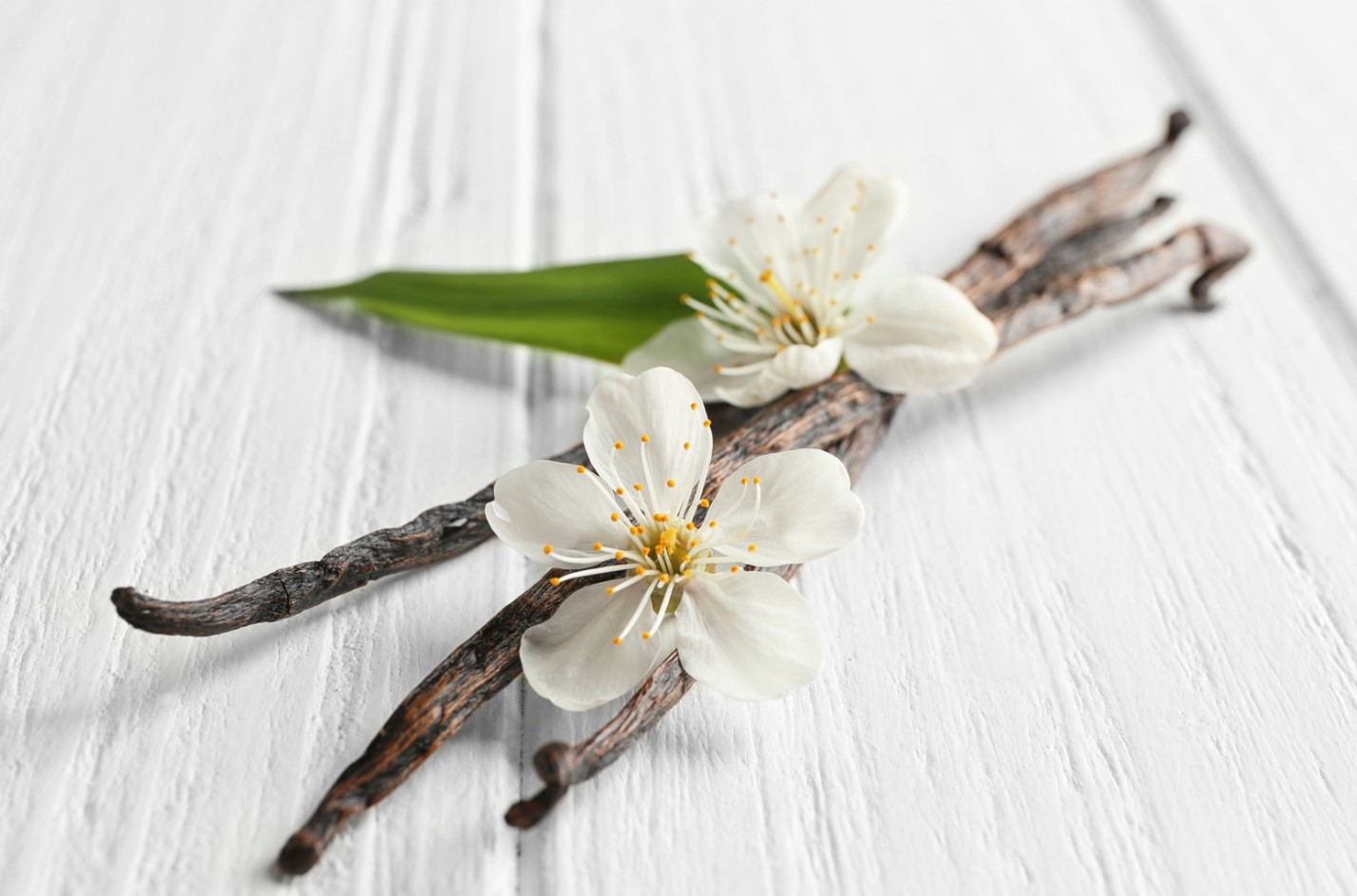
Types Of Vanilla: Varieties And Flavors
Vanilla, with its unique and irresistible flavor, is adored by millions around the world. The vanilla plant is grown in many tropical countries, and it belongs to the orchid family. Out of the more than 100 varieties, only a few of them are widely used for commercial purposes. This post will explore the different types of vanilla, their flavor profile, and how they are used in various industries.
One of the most popular types of vanilla is Bourbon vanilla, which is grown in Madagascar, Réunion, and other Indian Ocean islands. Bourbon vanilla has a creamy, sweet, and floral flavor and aroma, which makes it ideal for use in baking, confectionery products, and ice creams. Tahitian vanilla, grown in Tahiti and other South Pacific islands, has a fruity, flowery, and anise-like flavor. Tahitian vanilla is commonly used in perfumes, cosmetics, and aromatherapy oils.
Mexican vanilla, which originated in Mexico, has a mellow, spicy, and sweet flavor, with a hint of smokiness. This type of vanilla is ideal for use in chocolates, coffee, and savory dishes. Indonesian vanilla, also known as Java vanilla, has a woody, smoky, and nutty flavor, and is frequently used in perfumes, cosmetics, and tobacco products.
- Vanilla Types:
- Bourbon vanilla
- Tahitian vanilla
- Mexican vanilla
- Indonesian vanilla
| Type of Vanilla | Origin | Flavor Profile | Common Uses |
|---|---|---|---|
| Bourbon Vanilla | Madagascar, Réunion, Indian Ocean islands | Creamy, sweet, floral | Baking, confectionery, ice cream |
| Tahitian Vanilla | Tahiti, South Pacific islands | Fruity, flowery, anise-like | Perfumes, cosmetics, aromatherapy oils |
| Mexican Vanilla | Mexico | Mellow, spicy, sweet, smoky | Chocolates, coffee, savory dishes |
| Indonesian Vanilla | Java, Indonesia | Woody, smoky, nutty | Perfumes, cosmetics, tobacco products |
Vanilla is not only used for its unparalleled flavor in cooking and baking but also in countless other industries. The flavor and fragrance industries rely heavily on vanilla for their products. Vanilla is used in perfumes, candles, soaps, and air fresheners because of its rich and warm fragrance. Vanilla extract is a popular ingredient in medicinal applications such as antispasmodic and anti-inflammatory treatments. With its versatility and unique flavor, vanilla has become a staple ingredient in various products worldwide.
In conclusion, there are numerous types of vanilla, each with a distinct flavor profile and unique cultural significance. Whether you are a baker, chef, perfumer, or simply someone who loves the aroma and taste of the vanilla plant, there is a variety of vanilla that is perfect for you.
Vanilla Characteristics: Aroma And Taste Profile
Vanilla is one of the most popular flavors in the world, and has a distinct aroma and taste profile that sets it apart from other flavors. The unique characteristics of vanilla are due to its chemical composition, which includes vanillin, a compound that gives vanilla its signature flavor and aroma.
The aroma of vanilla is sweet and floral, with notes of caramel and a hint of spice. Vanilla has a warm, comforting scent that is often associated with home-baked goods, and is a popular ingredient in perfumes, candles, and other fragrances.
In terms of taste, vanilla is sweet and creamy, with a smooth, mellow flavor that is not overpowering. The flavor of vanilla can enhance and complement other flavors, and is often used in baking, ice cream, and other desserts. Vanilla can also be used to balance and soften more acidic flavors, such as those found in coffee or fruit.
- Vanilla is used in a wide range of culinary applications, including baking, cooking, and beverage making.
- Vanilla is also used in non-culinary applications, such as perfumes, candles, and aromatherapy products.
- The unique aroma and taste profile of vanilla is due to its chemical composition, which includes vanillin and other compounds.
| Characteristic | Description |
|---|---|
| Aroma | Sweet, floral, with notes of caramel and spice. |
| Taste | Sweet, creamy, smooth, and mellow. |
| Uses | Culinary applications, non-culinary applications. |
Overall, vanilla is a versatile and widely used flavor that is beloved for its sweet, comforting aroma and smooth, mellow taste. Whether you’re using it in baking or fragrance-making, vanilla is sure to add a touch of warmth and sweetness to any dish or product.
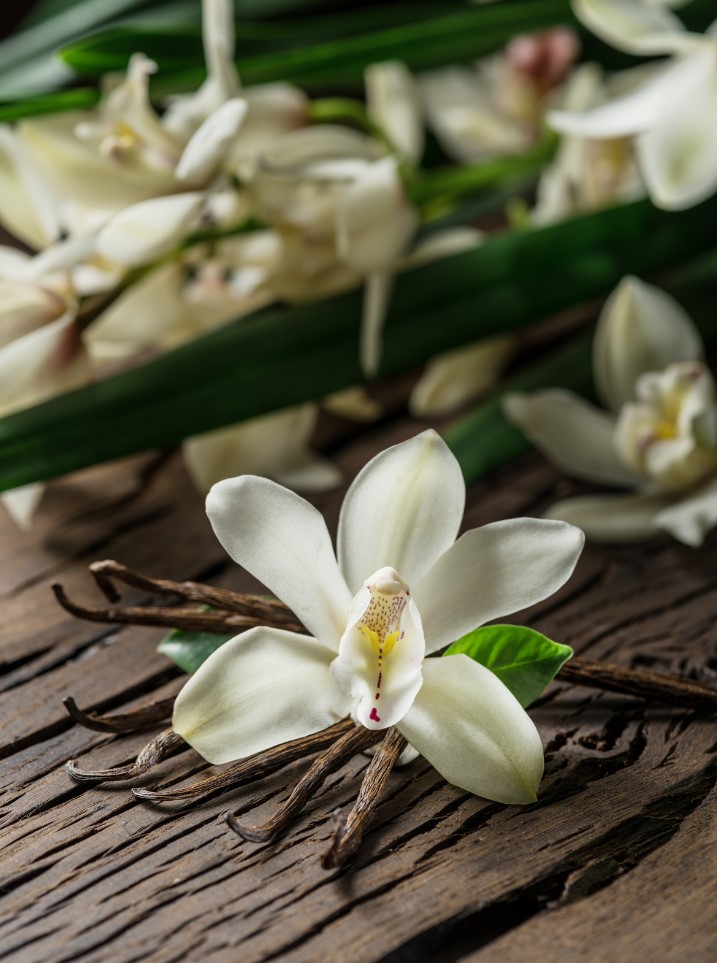
Vanilla Cultivation: Growing And Harvesting Techniques
Vanilla cultivation involves growing and harvesting vanilla beans, which are the fruit of the Vanilla orchid. Although vanilla is a tropical plant, it requires specific environmental conditions to grow successfully. In this blog post, we will discuss the growing and harvesting techniques involved in cultivating vanilla.
- Growing Vanilla: Vanilla is typically grown in tropical climates with high humidity and temperatures ranging from 20 to 30°C. The Vanilla orchid requires partial sunlight and well-draining soil that is free of weeds and pests. The plants are typically propagated by stem cuttings, and it can take up to three years for the plants to produce their first crop of vanilla beans.
- Pollination: Vanilla orchids are self-infertile, which means they require cross-pollination to produce fruit. This process is done by hand in most vanilla-producing regions. Pollination is done by taking a thin stick or toothpick and using it to transfer the pollen from the anther to the stigma of the flower. Each flower must be pollinated individually, which is a time-consuming process.
- Harvesting: Harvesting vanilla beans is a delicate process. The beans must be picked at the right time to ensure maximum flavor and quality. Beans are typically harvested when they are green and yellow, and still plump, but before they begin to turn brown. When the beans are harvested, they are often blanched in hot water to stop the natural maturation process and remove any bacteria or fungi that might be present on the surface.
Once harvested, the beans are fermented and dried to develop their characteristic flavor and aroma. Fermentation is a crucial step in the vanilla production process, as it breaks down the sugars in the beans and converts them into the vanilla flavor. Properly fermented beans will have a rich, dark color and a sweet, floral aroma. After fermentation, the beans are sun-dried for several weeks until they are fully cured.
Growing and harvesting vanilla beans is a labor-intensive process that requires careful attention to detail. However, the end result is a delicious and highly prized ingredient that is used in a vast array of culinary and non-culinary applications.
Vanilla Processing: Curing And Drying Methods
Vanilla processing is a crucial step in the production of high-quality vanilla products. It involves curing and drying the vanilla beans to achieve the distinct flavor and aroma that is associated with vanilla. Let’s take a closer look at the two primary methods used for curing and drying vanilla beans.
- Traditional Curing: This method involves exposing the freshly harvested vanilla beans to sunlight during the day and wrapping them in blankets at night. This process can take up to six weeks and requires constant attention and monitoring. The traditional curing method is known to produce a unique and complex flavor profile that is highly prized by gourmet chefs and food enthusiasts.
- Forced Air Curing: In this method, the vanilla beans are placed in temperature-controlled rooms with fans that circulate warm air approximately 140°F around the beans. This process removes moisture from the beans and speeds up the curing process, reducing the time to two to three weeks. The forced air curing method is ideal for commercial vanilla production as it requires less labor and produces beans that are considered more uniform in quality.
In addition to the methods used in processing vanilla, the type of vanilla bean is also a crucial factor in determining the quality and flavor of the finished product. The most common types of vanilla are Bourbon (also known as Madagascar vanilla), Mexican, and Tahitian. Each has its own distinct flavor profile and is used in different applications, from baking to perfumes and aromatherapy.
| Type of Vanilla | Characteristics |
|---|---|
| Bourbon (Madagascar vanilla) | Rich and creamy with a sweet, buttery flavor and a strong vanilla aroma. |
| Mexican | Spicy with vanilla notes that are both earthy and floral. |
| Tahitian | Fruity and floral, with a milder vanilla flavor that is often described as having notes of cherry, licorice, and caramel. |
Whether you prefer traditional or modern methods of curing and drying vanilla, the most important aspect of producing high-quality vanilla products is to use only the finest, highest quality vanilla beans. By doing so, you can ensure that your finished product will have the distinctive, rich flavor and aroma that is associated with vanilla.
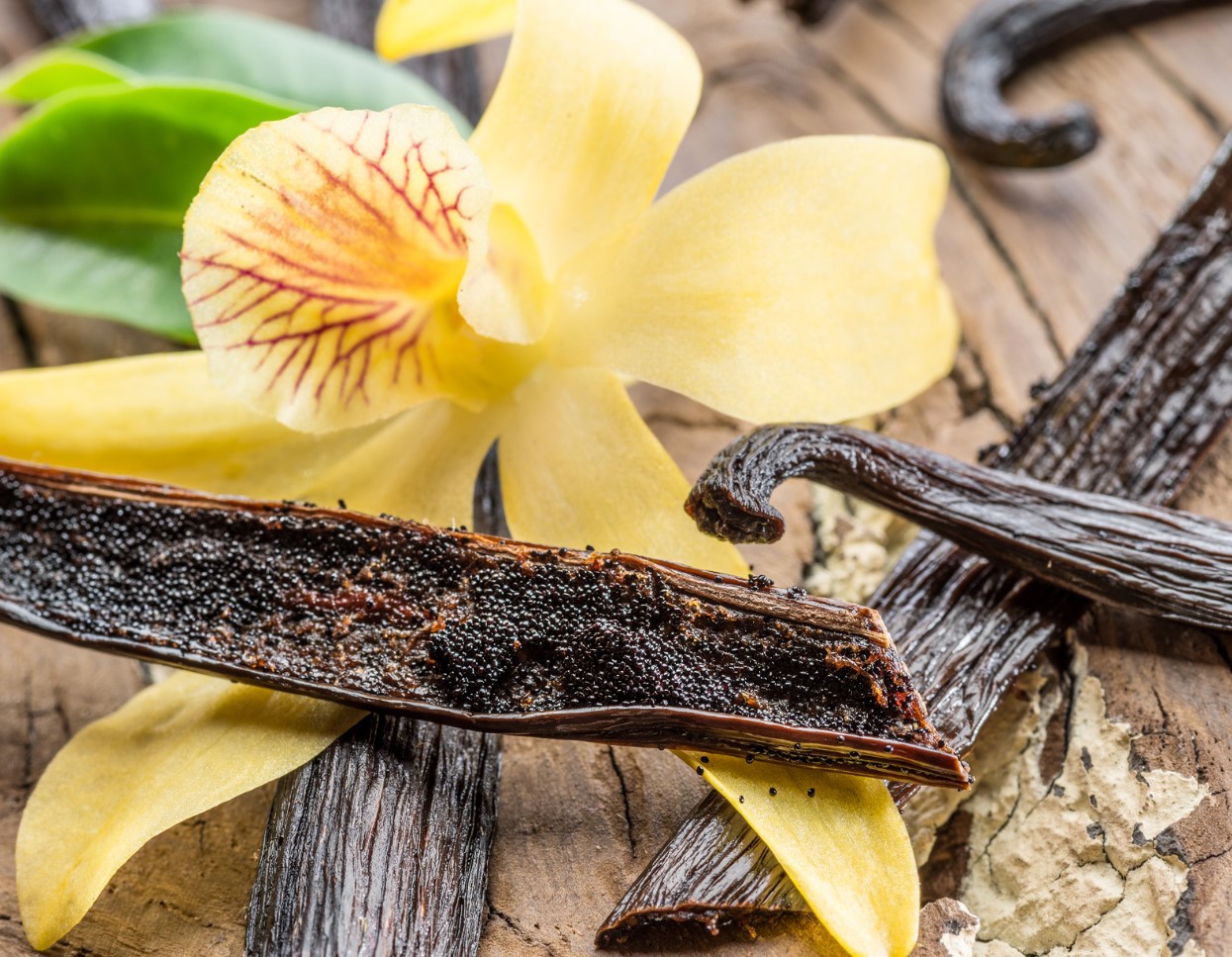
Vanilla Production: Supply And Demand Trends
Vanilla is one of the most popular flavors in the world, used in a variety of food and non-food products. However, the supply and demand of vanilla have fluctuated over the years due to a variety of factors.
One major factor that affects the production of vanilla is the weather. Vanilla is primarily grown in tropical regions, such as Madagascar, Indonesia, and India. If there is excess rainfall or a drought, it can impact the growth and yield of the vanilla bean. This can lead to shortages of vanilla, which in turn, drives up the price.
- Another factor that affects the supply of vanilla is the method of cultivation.
- Traditionally, vanilla has always been hand-pollinated, which is a time-consuming and labor-intensive process.
- However, in recent years, some growers have turned to synthetic pollination methods, which can lead to higher yields.
| Country | Production (in tons) |
|---|---|
| Madagascar | 3,300 |
| Indonesia | 1,500 |
| India | 1,000 |
| Papua New Guinea | 300 |
The demand for vanilla has also increased over the years, especially in the food industry. Vanilla is used in a variety of products, such as ice cream, baked goods, and beverages. When the demand for vanilla exceeds the supply, it can lead to higher prices and even artificial vanilla flavoring being used instead of the real thing.
In recent years, there has been a push for sustainable vanilla practices, such as fairtrade and organic methods. This not only benefits the environment, but it also ensures that vanilla farmers are paid fairly for their work. By supporting sustainable vanilla practices, we can help ensure a consistent supply of vanilla for years to come.
Sustainable Vanilla: Fairtrade And Organic Practices
Vanilla is one of the most widely used flavors in the world, and it’s a primary ingredient in everything from desserts and drinks to skincare products and fragrances. As the demand for vanilla continues to rise, there has been a growing concern about the impact of vanilla production on the environment and the workers involved in the process. This has led to the development of sustainable vanilla farming practices that prioritize fair trade and organic methods.
Fairtrade practices aim to ensure that farmers and workers involved in vanilla production receive fair compensation for their labor and have safe and humane working conditions. This includes paying a fair price for the vanilla beans, providing access to education and healthcare, and promoting gender equality in the workforce.
- In fairtrade systems, vanilla farmers are often organized into cooperatives, which provide them with greater bargaining power and more control over the production and sale of their goods.
- Organic farming practices also play an important role in sustainable vanilla production. Organic certification requires that no synthetic pesticides or fertilizers are used in the production process, which reduces the environmental impact of vanilla cultivation.
- Organic vanilla is also free from genetic modification and irradiation.
Both fairtrade and organic practices are beneficial for the environment, the workers involved in vanilla production, and the end consumers who enjoy vanilla-based products. Choosing fairtrade and organic vanilla products helps to support sustainable farming practices and ensure that vanilla production continues to thrive without negatively impacting the environment or communities.
| Benefits of Sustainable Vanilla Farming Practices: |
|---|
| Improves the livelihoods of farmers and workers involved in vanilla production. |
| Preserves the biodiversity of the ecosystem by reducing chemicals and preserving natural habitats. |
| Helps to combat climate change by reducing the carbon footprint of vanilla production. |
| Provides consumers with higher quality vanilla products that are free from harmful chemicals and additives. |
In conclusion, sustainable vanilla farming practices are crucial for preserving the environment and ensuring that the workers involved in vanilla production are treated fairly. By choosing fairtrade and organic vanilla products, consumers can help to support these practices and promote a more sustainable future for vanilla farming.
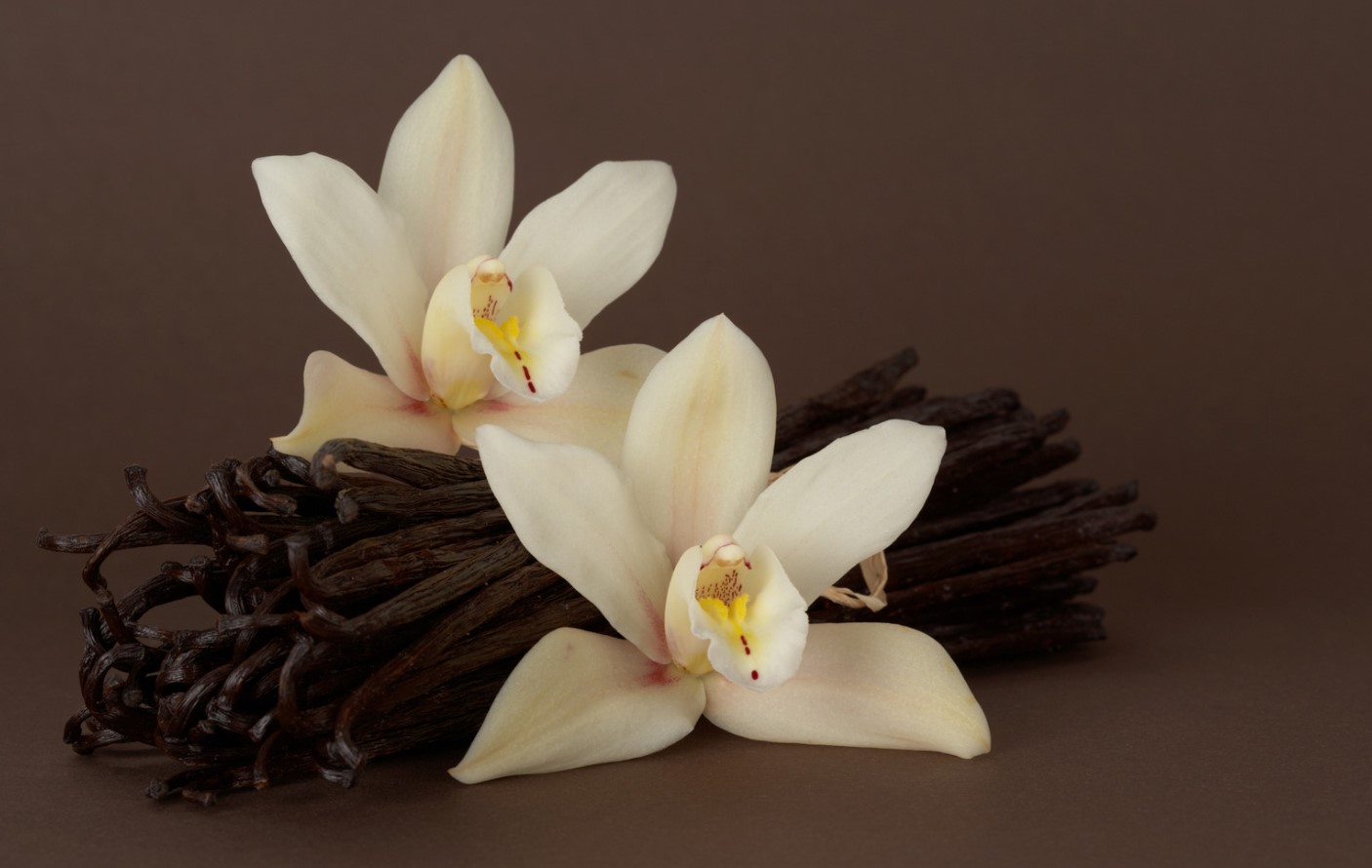
Vanilla Extracts: Liquid Concentrates And Powders
Vanilla is a versatile ingredient that can be used in various culinary and non-culinary applications. One of the most popular forms of vanilla is vanilla extract. Vanilla extract is a liquid concentrate that is made from vanilla beans and alcohol. Vanilla extract is commonly used in baking and cooking to add flavor and aroma to dishes. Vanilla extract is also used in non-culinary applications such as perfumes and aromatherapy. In this blog post, we will explore the different types of vanilla extracts, their production methods, and their uses.
Types of Vanilla Extracts:
There are two main types of vanilla extracts: pure vanilla extract and imitation vanilla extract. Pure vanilla extract is made from real vanilla beans and alcohol. It has a rich, complex flavor and aroma that is highly valued in the culinary industry. Imitation vanilla extract, on the other hand, is made from synthetic vanillin and other flavoring compounds. While imitation vanilla extract is less expensive than pure vanilla extract, it has a simpler flavor profile and is generally considered to be of lower quality.
- Pure vanilla extract: Made from real vanilla beans and alcohol.
- Imitation vanilla extract: Made from synthetic vanillin and other flavoring compounds.
Production Methods:
The production of vanilla extract differs depending on the type of extract being made. Pure vanilla extract is made by steeping vanilla beans in a mixture of alcohol and water. The mixture is then left to age for several months, during which time the flavor and aroma compounds from the vanilla beans infuse into the alcohol. The final product is a rich, amber-colored liquid with a complex flavor and aroma.
Imitation vanilla extract, on the other hand, is made by combining synthetic vanillin with other flavoring compounds and diluting the mixture with alcohol and water. While the production process is much simpler than that of pure vanilla extract, the resulting product is less complex in flavor and aroma.
| Pure Vanilla Extract | Imitation Vanilla Extract |
|---|---|
| Made from real vanilla beans and alcohol | Made from synthetic vanillin and other flavoring compounds |
| Complex flavor and aroma | Less complex flavor and aroma |
| Long production process | Shorter production process |
Uses:
Vanilla extract is commonly used in baking and cooking to add flavor and aroma to dishes. It is used in a variety of sweet dishes such as cookies, cakes, and ice cream. Vanilla extract is also used in savory dishes such as sauces and marinades to add depth and complexity to the flavor profile. In addition to culinary applications, vanilla extract is also used in perfumes and aromatherapy to promote relaxation and reduce stress.
In conclusion, vanilla extract is a versatile ingredient that is widely used in a variety of culinary and non-culinary applications. Whether you prefer pure vanilla extract or imitation vanilla extract, you can enjoy the rich, complex flavor and aroma of vanilla in a convenient and easy-to-use liquid concentrate.
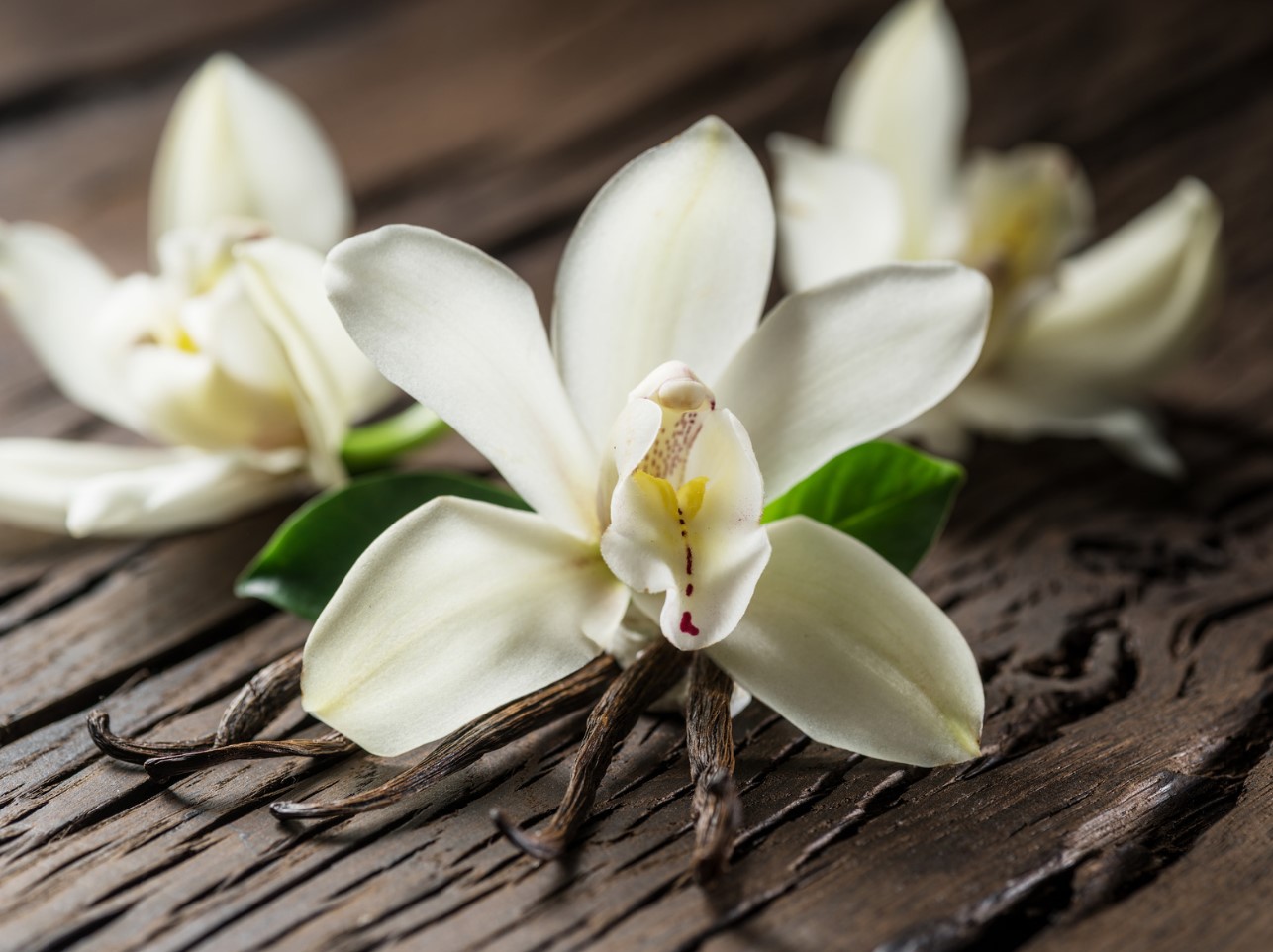
Vanilla Uses: Culinary And Non-Culinary Applications
Vanilla is one of the most versatile flavors used in both culinary and non-culinary applications. Its distinctive aroma and flavor make it a popular choice for a variety of dishes and products. Here are some of the most common uses of vanilla:
- Baking: Vanilla is an essential ingredient in many baked goods, including cakes, cookies, and pastries. It enhances the flavor of these treats and adds a sweet, aromatic touch.
- Ice cream: Vanilla ice cream is a classic flavor that’s loved by many. It’s made by infusing cream with vanilla beans or extract to achieve a smooth, creamy texture.
- Beverages: Vanilla is used in a variety of drinks, from coffee and tea to smoothies and milkshakes. It adds a subtle sweetness and aromatic character to these drinks.
- Candies and desserts: Vanilla is also used in candies and other desserts, such as custards, puddings, and mousse. It adds a rich, creamy flavor to these treats.
But vanilla is not just limited to culinary applications. It’s also used in a variety of non-culinary products, such as:
- Fragrances: Vanilla’s sweet, warm aroma makes it a popular choice in perfumes and other fragrances. It’s often combined with other scents to create a unique and alluring aroma.
- Aromatherapy: Vanilla is also used in aromatherapy to promote relaxation and reduce stress. Its soothing aroma can help calm the mind and promote feelings of well-being.
- Candles: Vanilla-scented candles are a popular choice for creating a warm, inviting ambiance in any room. The sweet, comforting aroma of vanilla can make any space feel cozier.
- Cosmetics: Vanilla is used in a variety of cosmetic products, such as lotions, soaps, and lip balms. It can help soothe and hydrate the skin, and its sweet aroma adds a pleasant touch to these products.
Overall, vanilla’s versatility and distinctive flavor make it a popular choice for a variety of applications, both culinary and non-culinary. Whether you’re baking a cake, lighting a candle, or applying lotion, vanilla is sure to add a sweet and aromatic touch to your experience.
Vanilla İn The Kitchen: Baking And Cooking Tips
Vanilla is one of the most widely used flavors in the world, especially in the kitchen. People love its unique aroma and taste, and often use it in various cooking and baking recipes. However, it’s not always easy to use vanilla in the kitchen, especially if you’re not familiar with it. In this post, we’ll take a closer look at how to use vanilla in the kitchen, and give you some useful tips for cooking and baking with this amazing flavor.
If you’re using vanilla beans, the first thing you need to do is remove the seeds from the bean. To do this, simply cut the vanilla bean lengthwise with a sharp knife, and use the tip of the knife to scrape out the seeds. Once you’ve done this, you can add the seeds to your recipe. If you’re using vanilla extract, be sure to use pure extract rather than imitation vanilla, which is often made with artificial flavors.
- When using vanilla in baking, try to match its flavor with other ingredients. For example, vanilla pairs well with chocolate, strawberries, and caramel, so consider using these ingredients in your recipe.
- If you’re making a custard-based dessert, like flan, vanilla can add a nice creamy texture to the dish. Try using a vanilla bean or pure extract to enhance the richness of the dessert.
- If you’re making a cake or muffin recipe, try using both vanilla extract and vanilla beans. This will add a layered flavor to your baked goods that people will love.
Besides using vanilla in baking, you can also use it in cooking. If you’re making a savory dish, like a sauce or marinade, try adding a little bit of vanilla extract to balance out the acidity of the dish. It can also add a nice aroma to the dish, making it more appetizing.
| Vanilla in Cooking | Recipe Ideas |
|---|---|
| Grilled chicken | Add a teaspoon of vanilla extract to the marinade for a unique flavor profile |
| Roasted vegetables | Sprinkle vanilla sugar over the vegetables before roasting for a sweet and savory taste |
| Mashed potatoes | Add a quarter teaspoon of vanilla extract to the mashed potatoes for a cozy and comforting taste |
Overall, vanilla is a versatile flavor that can be used in many different ways in the kitchen. Whether you’re making a sweet dessert or a savory dish, vanilla can add a unique taste and aroma that people will love. Just be sure to use high-quality vanilla products, like pure vanilla extract or vanilla beans, to get the best results.
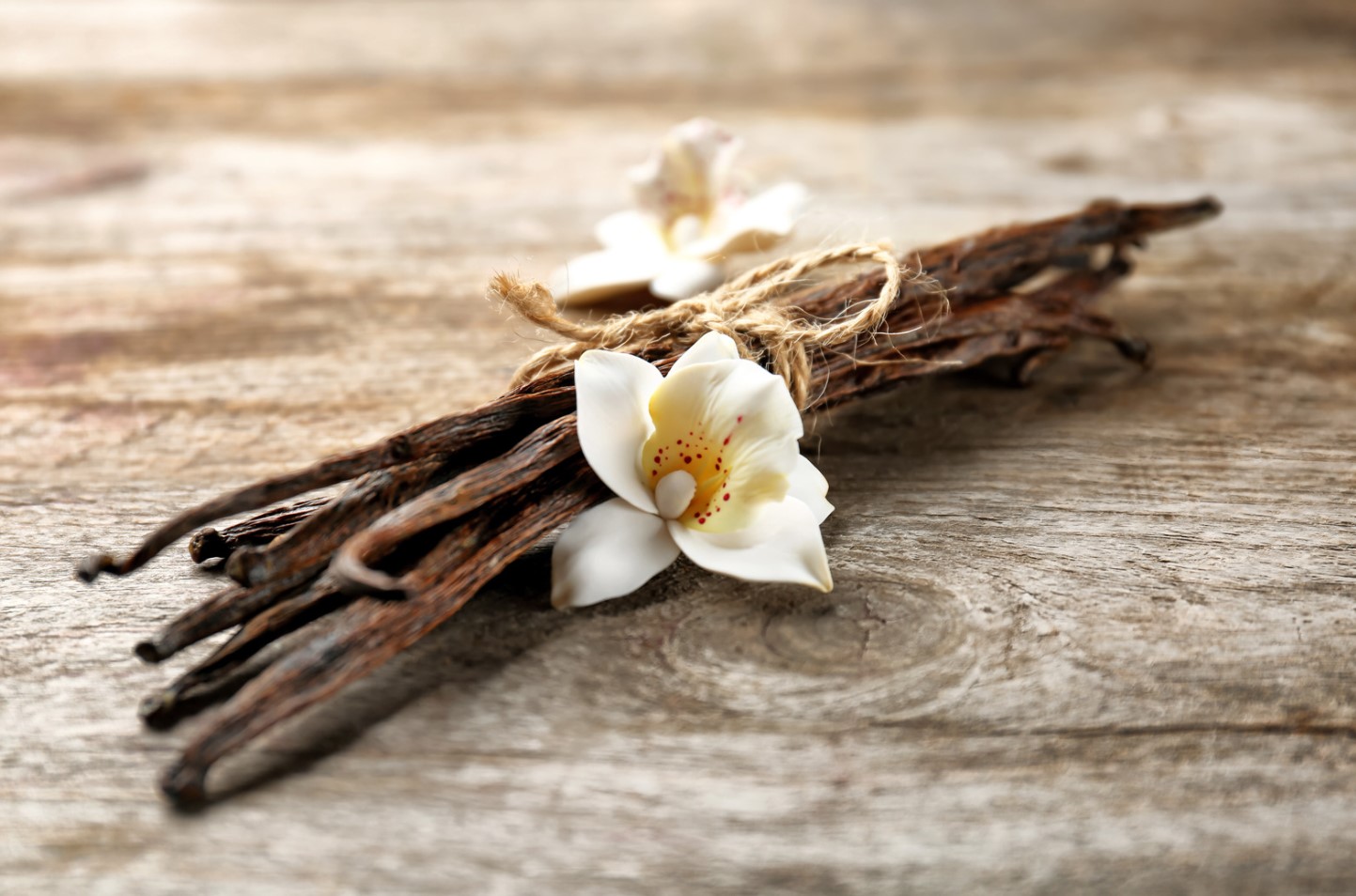
Vanilla Pairings: Best Flavors And Ingredients
Vanilla is one of the world’s most popular and beloved flavors. Its creamy, sweet taste and aroma can be found in many different types of desserts and beverages. While vanilla can certainly shine on its own, it also pairs incredibly well with a variety of other flavors and ingredients.
One classic pairing for vanilla is with chocolate. The rich, deep flavor of chocolate balances perfectly with the sweetness and lightness of vanilla. Vanilla can also be paired with fruit, such as strawberries or peaches, which brings a bright, fresh twist to the dessert. Other popular pairings include caramel, cinnamon, and nutmeg, all of which complement the warm, earthy flavor of vanilla.
- Chocolate
- Fruit (e.g. strawberries, peaches)
- Caramel
- Cinnamon
- Nutmeg
For those looking for a more savory experience, vanilla can also be paired with certain herbs and spices. For example, vanilla can complement the earthy flavors of sage and thyme, and can add a depth of flavor to marinades and sauces. Vanilla can even be used to enhance the flavor of meats, such as pork or chicken.
When it comes to beverages, vanilla pairs well with a variety of different types of alcohol. Vanilla is often added to whiskey or bourbon to create a rich, smooth flavor, and can also be added to coffee-based drinks or cocktails. Additionally, vanilla can be used in non-alcoholic beverages such as milkshakes or smoothies to add a touch of sweetness and creaminess.
| Beverages: | Food: |
|---|---|
| Whiskey/Bourbon | Chocolate |
| Coffee-based drinks | Fruit (e.g. strawberries, peaches) |
| Cocktails | Caramel |
| Milkshakes/Smoothies | Cinnamon |
Overall, the possibilities for pairing vanilla with other flavors and ingredients are endless. From sweet to savory, vanilla can be used to enhance the flavor and depth of many different types of dishes and drinks. So the next time you’re looking to add a little something extra to your culinary creations, consider adding a touch of vanilla!
Vanilla Nutrition: Health Benefits And Advantages
Vanilla is more than just a flavoring for desserts and beverages. It also provides numerous health benefits that make it a worthwhile addition to your diet. From improving digestion to reducing inflammation, vanilla has been used for centuries for its medicinal properties. Here are some of the health benefits and advantages of consuming vanilla:
- Anti-inflammatory properties: The antioxidants found in vanilla can help reduce inflammation in the body. This can help alleviate symptoms of chronic diseases such as arthritis and asthma.
- Digestive aid: Vanilla has been used in traditional medicine to help calm an upset stomach and aid in digestion. It can also help regulate bowel movements and prevent constipation.
- Mood enhancer: The aroma of vanilla has been shown to have a positive effect on mood and can help reduce stress and anxiety. This is why it is often used in aromatherapy.
- Antioxidant properties: The antioxidants in vanilla can help prevent cell damage caused by free radicals. This can help reduce the risk of chronic diseases such as cancer.
- Blood sugar control: Vanilla has been shown to have a positive effect on blood sugar levels, making it beneficial for those with diabetes or those at risk for developing the disease.
Vanilla can be consumed in various forms, from vanilla extract to vanilla beans. It is also used in various forms of cooking and baking. Incorporating vanilla into your diet can provide many health benefits and is a delicious way to boost your overall wellness.
Vanilla As A Fragrance: Perfumes And Aromatherapy
Vanilla has been known for its sweet aroma that can calm the mind and soothe the soul. Many people use vanilla as a fragrance to create a relaxing and comforting atmosphere in their homes. But did you know that vanilla can also be used in perfumes and aromatherapy?
In perfumes, vanilla is often used as a base note that adds warmth and depth to the scent. Its rich and creamy aroma blends well with other essential oils and fragrance notes like bergamot, lavender, and patchouli. Vanilla is also known to have aphrodisiac properties that make it a popular choice in sensual perfumes and colognes.
- Vanilla is a popular choice in sensual perfumes and colognes.
- It has aphrodisiac properties that make it a popular choice in sensual perfumes and colognes.
- Vanilla’s rich and creamy aroma blends well with other essential oils and fragrance notes like bergamot, lavender, and patchouli.
Aromatherapy is another way to use vanilla’s scent to promote relaxation and reduce stress. Vanilla essential oil can be added to a diffuser, bath water, or massage oil to create a calming and mood-lifting effect. It’s also used in skincare products for its anti-inflammatory properties that can soothe and heal the skin.
| Benefits of vanilla in aromatherapy | Benefits of vanilla in skincare |
|---|---|
|
|
Overall, vanilla’s sweet and comforting scent makes it a popular choice in both perfumes and aromatherapy. Its versatility allows it to blend well with other essential oils and improve the overall fragrance or skincare product. So the next time you’re looking for a new perfume or relaxing scent, consider vanilla as a natural and beneficial option.
Vanilla İn History: Cultural And Mythological Significance
Vanilla has been a popular flavor for thousands of years and has played an important role in various cultures and mythologies throughout history. The use of vanilla can be traced back to the ancient Mayans and Aztecs, who used it as a flavoring for chocolate and other foods.
Vanilla was first introduced to Europe by the Spanish conquistadors in the 16th century. It quickly became popular among the wealthy and aristocratic as a flavoring for desserts and beverages. Vanilla soon became a status symbol and was used to signify wealth and luxury.
- In some cultures, vanilla is believed to have aphrodisiac properties.
- Vanilla has also been used in traditional medicine to treat a variety of ailments, including headaches and stomachaches.
- The word vanilla comes from the Spanish word vainilla, which means ‘little pod’.
In ancient times, vanilla was considered a sacred plant and was often used in religious ceremonies. The Totonac people of Mexico believed that the vanilla plant was a gift from the gods and that the scent of the flowers represented the souls of their ancestors.
| Culture/Mythology | Significance of Vanilla |
|---|---|
| Aztec | Used vanilla as a flavoring for chocolate, and believed it to have medicinal properties |
| Mayan | Used vanilla in religious rituals, and thought it had the power to ward off evil spirits |
| Indian | Believed that vanilla could induce sleep and calm the mind |
| Ancient Egyptians | Used vanilla as a perfume and thought it had mystical powers |
Vanilla has also played an important role in modern pop culture. The scent of vanilla is often associated with comfort and warmth, and is often used in perfumes, candles, and other products. Vanilla has become a symbol of nostalgia and home, and is often used to evoke feelings of warmth and familiarity.
In conclusion, vanilla has had a rich cultural and mythological significance throughout history. From ancient times to modern pop culture, vanilla has been celebrated for its wonderful aroma and taste. It has been used for religious rituals, medicinal purposes, and as a symbol of status and luxury. Today, vanilla is still one of the most popular flavors in the world, and its cultural significance continues to evolve and thrive.
Vanilla Industry: Challenges And Opportunities.
Vanilla is one of the most popular flavors in the world. It is used in a variety of products, including food, cosmetics, and fragrances. The vanilla industry is a thriving business, but it is not without its challenges. In this blog post, we will discuss some of the challenges facing the vanilla industry and the opportunities that exist for its growth and expansion.
Challenges:
- Price Volatility: Vanilla prices have been volatile in recent years. Weather conditions and global demand affect the supply chain and can cause prices to fluctuate dramatically.
- Fraudulent Practices: Vanilla crops are susceptible to theft and fraud, which can lead to difficulty in determining the authenticity of the vanilla being sold.
- Sustainability: There is growing concern over the environmental impact of vanilla cultivation. The industry must find ways to reduce the impact of farming practices on the environment.
Opportunities:
- Diversification: Vanilla is used in a wide range of products, including ice cream, chocolate, and beverages. The industry can expand its reach by developing new products and finding new applications.
- Quality Control: The industry can benefit from implementing stricter quality control measures to ensure the authenticity and quality of the vanilla being sold.
- Sustainable Practices: Implementing sustainable practices in the cultivation and processing of vanilla can not only help the environment but can also improve the quality of the vanilla produced.
- Investment: The vanilla industry has the potential for growth and expansion. Investing in research and development, infrastructure, and technology can improve the efficiency of the supply chain and help to meet increasing demand.
| Top Vanilla Producing Countries | Percentage of Global Production |
|---|---|
| Madagascar | approximately 80% |
| Indonesia | approximately 10% |
| Papua New Guinea | approximately 3% |
| India | approximately 2% |
| Uganda | approximately 2% |
The vanilla industry faces many challenges, but there are many opportunities for growth and success. By implementing sustainable practices, investing in research and development, and improving quality control measures, the industry can meet increasing demand and continue to thrive.